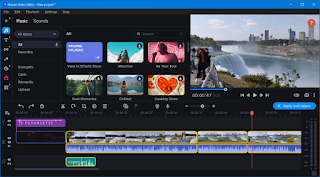Creative Reflection Questions
1. How do your products reflect social groups or social issues?
My group's film, Silent Echoes, is about struggling with mental illness. Mental illness is a common yet often forgotten issue within younger generations, which is why our group chose to call out the issue with our short film. The production is centered around a 17 year old boy who internalizes his depression in an effort to appear cooler and stronger to his peers. Although this occurrence is present among almost all demographics of teens, it is especially seen in younger boys due to societal expectations and stereotypes. This is shown through our lead character, who is seemingly happy when with his friends and girlfriend but ultimately takes his own life due to his invisible struggle with mental health. Although it may seem abrupt, the character does have subtle indicators of this struggle, like zoning out, starting at the ceiling, and aggressively gripping his steering wheel. These real-life representations help the viewer understand that mental illness can be hidden in plain sight.
This segues into the bigger and arguably more problematic issue of how easily those dealing with depression and sadness can hide it well enough for surrounding individuals not to notice. Even when they are together, our protagonist’s friends do not notice his pain. In parallel, the protagonist hides his hurt, only showing a shallow normalness to his friends. Through our film, we reflect these real-world problems with the goal to awaken our audience to the harsh reality that anyone around them can be going through something similar. We hope to enlighten and encourage individuals to pay more attention, look deeper, and check in on those close to them.
2. How do the elements of your production work together to create a sense of ‘branding’?
Our film delves into a very serious and emotional topic, and this seriousness is shown cohesively throughout all elements of our production and its marketing.
To begin with the early stages of creation, we drew our storyboard in only black and white, to show the graveness and solemnity of the topic. The website, postcard, and social media profiles follow similar dark color schemes.
In our film, we also utilized cinematography to further this image. In using cinematography, we connected our audience to our character, through natural lighting, soft contrast, and handheld videography. These evoke more emotion- putting the audience in our protagonist’s shoes.
A huge aspect of all productions- and especially our movie- is music. This signals to the audience what they should be feeling. For example, in our film, we used emotional songs such as “Vienna” by Billy Joel and “The Night We Met” by Lord Huron. These songs, with slow pacing, impactful lyrics, and soft but powerful singing reflect the main character’s emotional turmoil. This is a continuity with the rest of our branding- emotional depth and depression.
Finally, in the in-movie text (on-screen, credits, titles, etc.), we furthered the dark look. We refrained from using fancy or superfluous fonts or colors that would counter the ‘hopeless’ aesthetic we created through the rest of the components. Instead, we used a plain font which we subtly displayed in corners of in natural places in the frame. Putting it in natural places on the frame (diegetic elements of the film: signage, reflections) furthers the seamless and immersive feeling of the production.
Lastly, we also incorporate symbolism in our film to subtly foreshadow the themes of the film. The frequent display of rooftops- danger, windows- disconnection with the outside world, and mirrors- introspection, serve as visual motifs that work together to add emotional depth.
3. How do your products engage with the audience?
Silent Echoes is built upon themes that connect with the audience due to its relatability. It is likely that most of our audience has either experienced the feeling of depression and emotional instability within themselves or through someone close to them. However, in creating our film, we deliberately chose tactics that would further our audience’s engagement.
In a storytelling sense, we established a happy, comfortable setting in the beginning. By showing scenes of a beautiful boat parade, our characters enjoying each other, dates, and hangouts, the audience is at ease with the life of our protagonist. By allowing our audience to enjoy him and his life, we also allow them to form a connection and investment in him. As the film goes on, and the layers of his character are slowly revealed, the audience roots for him and actively wishes him a happy ending.
By using minimal dialogue, we encourage our audience to interpret each scene themselves. What is he thinking right now? How is this film going to conclude? By relying on acting (expression, body, language, etc.) we force the audience to feel what the character is going through, rather than just watching and hearing it happen.
To further connect with the audience, we made the experience as relatable as possible. Not just the storyline itself, but the locations. As a team, our goal was to show that experiences such as the main character’s could happen to anyone. To show this, we included scenes at the gym, in the car, at friends’ houses. This engages the audience by allowing the audience to see themselves in these positions.
Finally, the resolution of the production disappoints the members of the audience who were invested in the protagonist’s happy ending. While they might have expected someone to pull him out of the depression, the final twist in which he ultimately takes his own life makes the audience think more deeply about the signs and symptoms shown before, as was the film's goal.
4. How have your research impacted your products and the way they use or subvert conventions?
To effectively convey the emotion of our story and accurately depict mental illness, it was necessary to research other short films and how they did so. Shorts such as “The Silent Child”, “Black Sheep”, and “If Anything Happens, I Love You” helped us in our decision making, such as using minimal dialogue and our visual and sound design. Especially in “If Anything Happens, I Love You”, we learned how to use acting and music to create emotional impact without needing to use words.
To do justice to all the people in the world struggling with mental illness, we had to research into the signs, symptoms, and implications of depression and anxiety. This aided us when creating an accurate and representative character. Our subtlety in the events that occur in the movie were done with purpose- rather than focusing on the drama of the suicide, we chose to focus on how one can preemptively see the signs. Therefore, we included more moments of zoning out, clutching the wheel while driving, or choosing not to send the text message.
On the other hand, to subvert expectations, we began our movie with a light and happy feel. This goes against conventions of most mental illness films, which usually keep a dark tone throughout the movie. Our goal in this was to lead the audience to believe they were going to watch a light-hearted coming of age movie, effectively creating a plot twist when it begins to deal with more emotional themes.
After exploring the videographic conventions of short films and specifically darker ones, we chose to use less irregular angles and shots. For example, we made frequent use of over the shoulder shots, landscapes, and slow motion. However, we did so with intent to move the story forward with purpose, not to simply do so for style.
Our use of both conventinal and unconventional approaches creates a film in with a lasting impact on the audience.



Comments
Post a Comment